The big event this month is the total solar eclipse. The path of totality begins in the Pacific Ocean. It reaches Isla Socorro and keeps going to mainland Mexico. After is crosses Mexico, it goes across part of the United States from Texas to the Great Lakes, goes into southeastern Canada, and the United States again through the far northeast. Then it returns to Canada through New Brunswick and Newfoundland and Labrador. In Mexico, there will be about four-and-a-half minutes of totality. That’s the maximum. It shortens a bit to four minutes in Illinois and Indiana. It’s down to three-and-a-half minutes when the shadow gets to Quebec and Maine. It’s under three minutes as it leaves Newfoundland and Labrador. Then it continues into the northern Atlantic Ocean. That’s on April 8. It cannot be understated how important it is to use solar viewing filters to see the sun in any phase except totality.
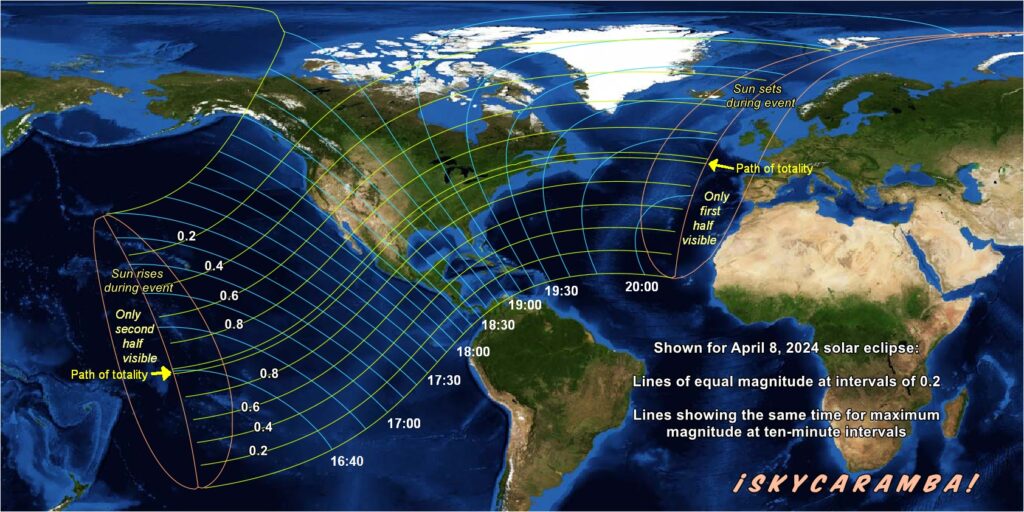
For evening sky watching, the month starts with Mercury retreating into the sunset. Jupiter is above it and moving toward Uranus. Comet 12P/Pons-Brooks is near Hamal, also in the west after sunset. See the greenish comet head in the general direction of Jupiter and Uranus. The comet is getting close to the planets when a thin, waxing crescent moon joins them on the 10th. The moon passes over the Pleiades the next night. The comet is just about aligned with Jupiter and Uranus on the 11th and 12th.
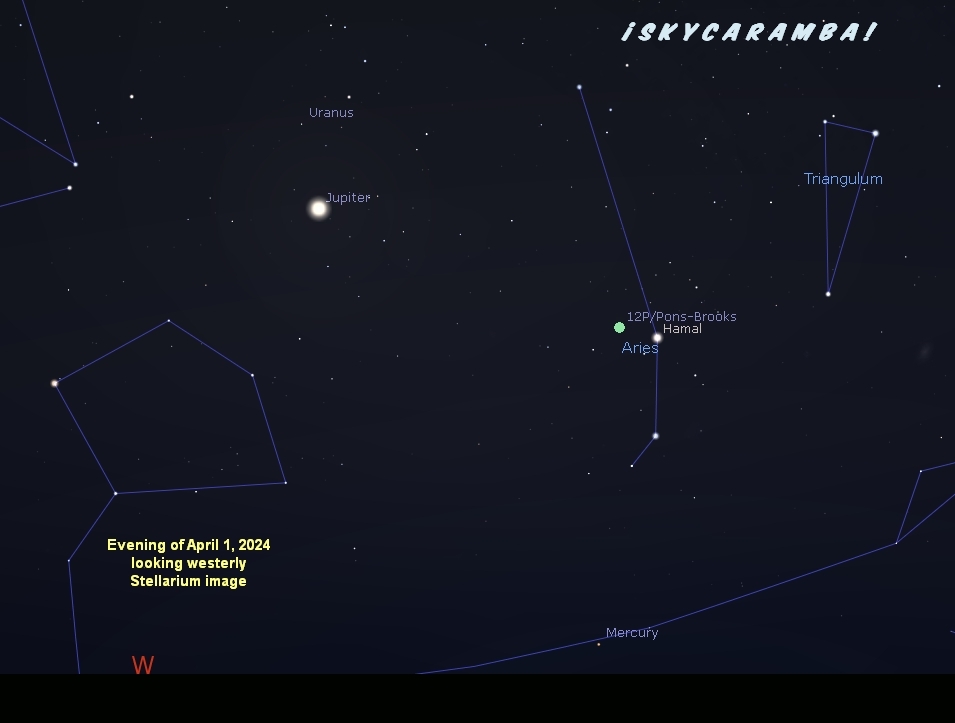
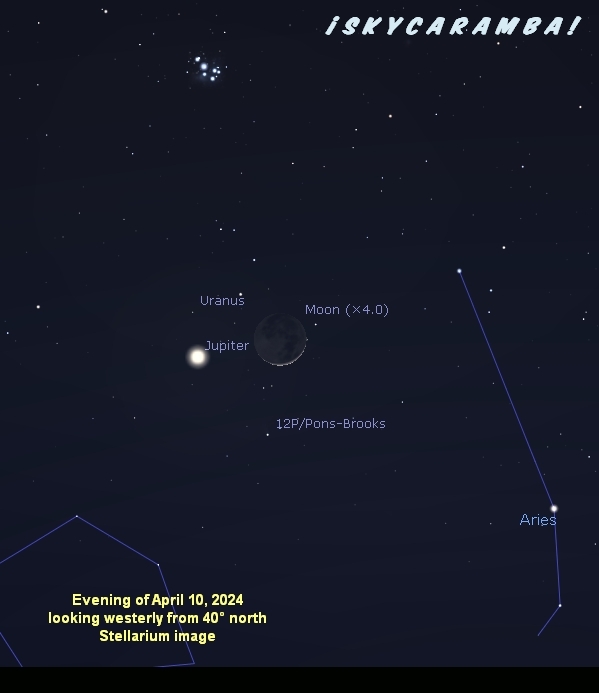
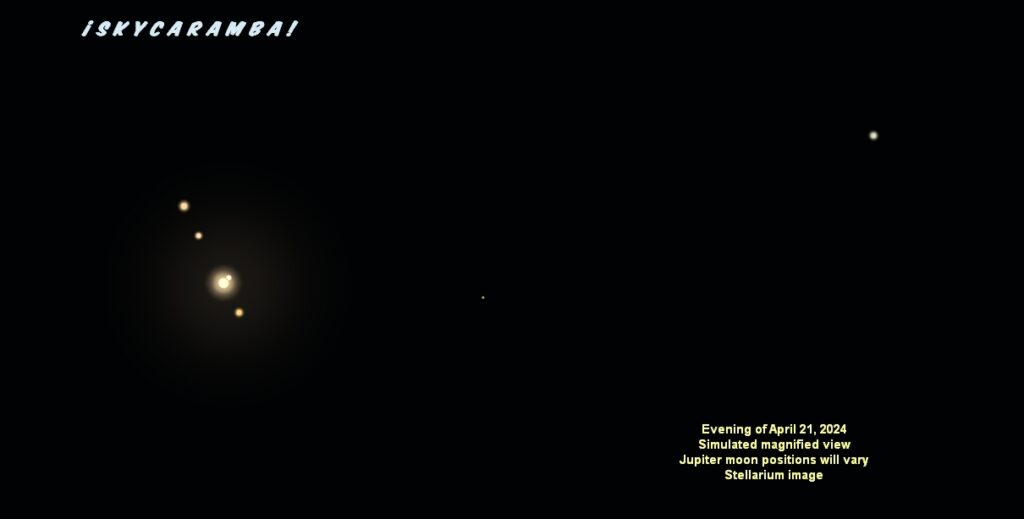
Jupiter and Uranus are 0.5° apart on the 21st. That’s a full moon width. They’ll look good in binoculars and telescopes. The four Galilean moons of Jupiter will add a little more splendor to the magnified sight. Comet 12P/Pons-Brooks is off to the south of them. The two planets and the comet will be close to the horizon and going down, so you have to look as soon as it gets dark and you must have a clear horizon.
Jupiter goes above Uranus for the rest of the month and the comet keeps going left. Since they’re getting closer to the horizon each evening, they get harder to see. These will also be the last weeks that you can see Orion in his full glory.
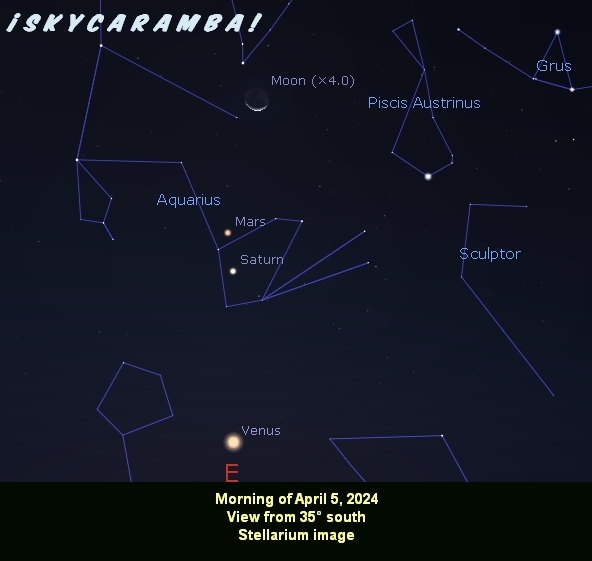
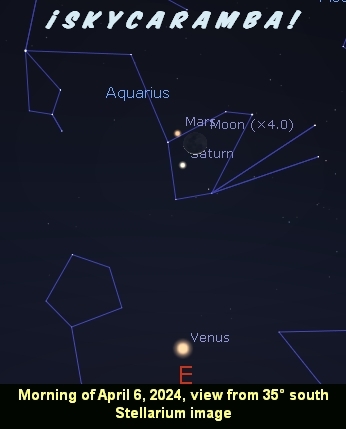

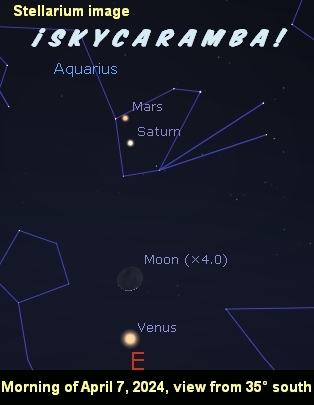
Southern hemisphere sky watchers get the best views of the morning planets when April starts. Venus is at the bottom of the stack and heading sunward. Saturn is above it and also heading toward the sun. Mars is on top and heading toward Saturn. A waning crescent moon is moving toward them in the first few days of the month. It passes by Mars and Saturn on the 5th. The moon’s close to Venus on the 7th.
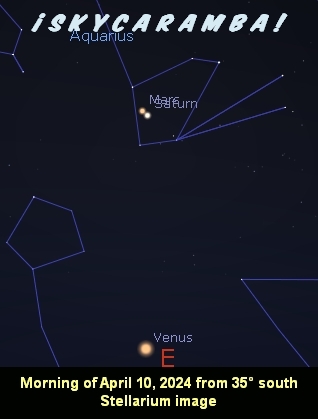
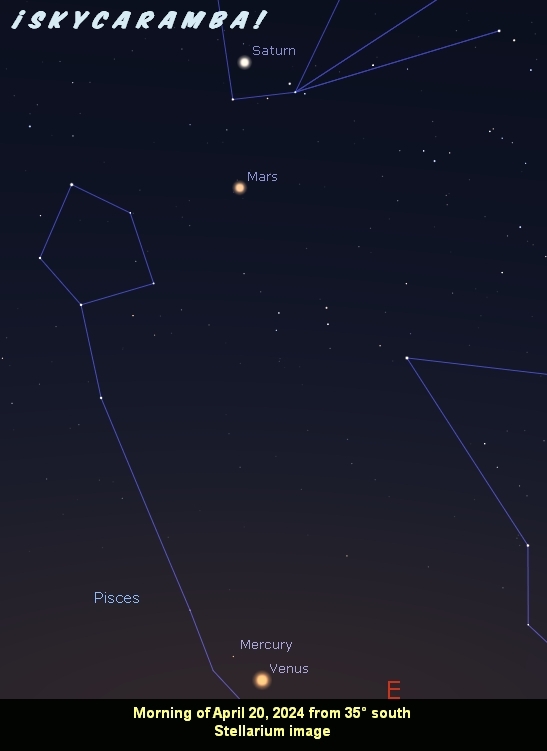
Mars passes Saturn on the 10th. The red planet keeps going. Mercury joins the morning lineup later in the month and is close to Venus on the 19th and 20th. Venus gets hard to spot in the morning light by the end of April, because it’s rising so close to sunrise. If you can see Mars on the 29th, get a telescope and try to spot Neptune next to it. They’ll be as close as 2′ apart! That’ll be at 04:31 Universal Time. Northwest Africa and the Pacific Ocean from the Angola Basin to the Cape Basin will be the best viewing spots to get the close call. Too far east of those longitudes, the planets will not be that close together yet. And west of them, the planets will be pulling apart already. Not that it will be a bad sight in any case.
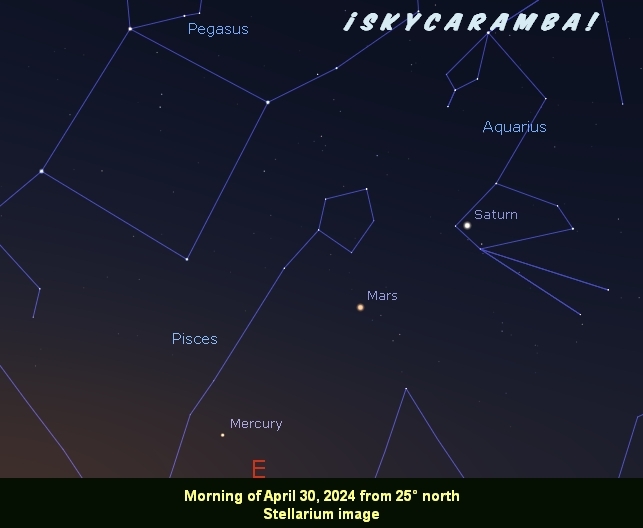
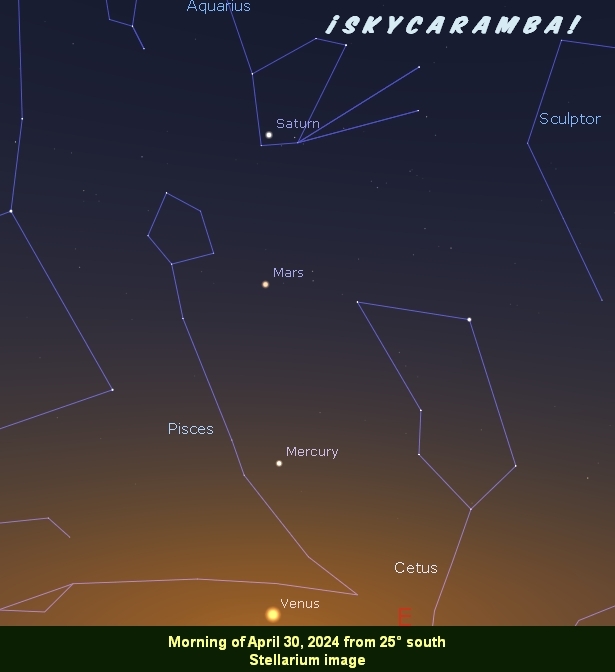
And if you can view from around 25° south on the last day of April, you may be able to spot a nice column with Venus on the bottom, Mercury above it, then Mars, and Saturn on top. Each planet will appear about evenly spaced. From 25° north, you get the lineup without Venus and the planets are at an angle going up and right. From 40° north, you probably won’t see Mercury. Keep going north and you begin having trouble spotting the Mars and Saturn too.
Moon phases this month: last quarter on the 2nd, new moon on the 8th, first quarter on the 15th, full on the 23rd.
Lunar positions: going north across the equator on the 7th, perigee at 358,900 km on the same day, northern lunistice at 28.6° on the 13th, apogee at 405,700 km on the 20th, crossing the equator southward on the 21st, and southern lunistice at 28.5° on the 28th.
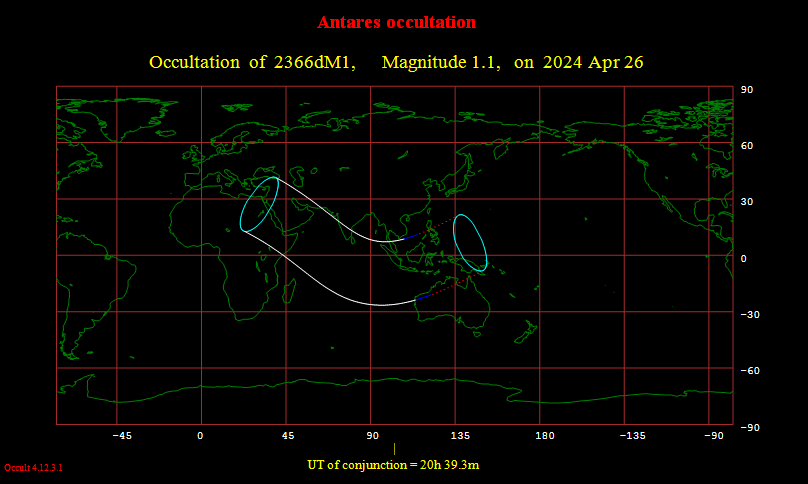
The moon passes near Pollux on the 15th and Regulus on the 18th. It’s close to Spica on the 23rd. And there’ll be an occultation of Antares on the 26th. The visibility area reaches from the Arabian Peninsula and Sudan, across the Indian Ocean and southern tip of India and Sri Lanka, to Malaysia and Indonesia.
Mercury goes through inferior conjunction on the 12th and aphelion on the 30th at 0.467 astronomical units from the sun.
The April Lyrids meteor shower peaks around the 22nd.
